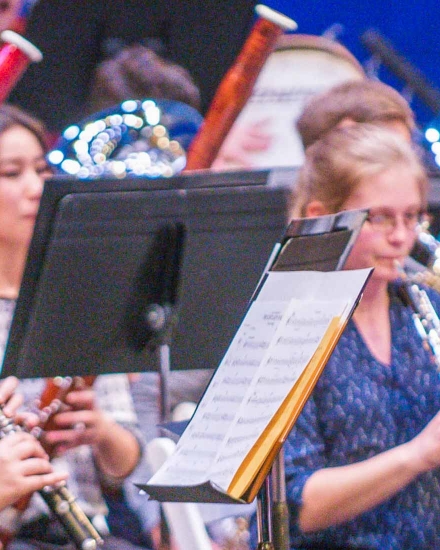Creating Positive Classroom Behavior
Aug 2019
We often hear fellow teachers talk about a student’s ill-disposition or bad attitude and how it has a negative impact on the group. Perhaps more than any subject in the school curriculum, the attitude of the students plays a crucial role in the forward progress (or lack of) of the music class and/or ensemble rehearsal. More than any other area of study, one individual with a negative attitude will influence everyone involved in a music class/rehearsal. Other academic disciplines afford students the option to have “good days” and “bad days” without infringing on their classmates or dramatically slowing the learning/teaching pace. However, in music, an individual with a sorrowful attitude can severely impede the advancement of the group; a musical organization is only as strong as its weakest member.
It is tempting to dismiss the troublesome student in hopes of avoiding the contamination factor, for we all know how contagious a miserable attitude can be. The “bad apple” can (as we have discovered) ruin the entire barrel. Asking the student to leave may only be a quick-fix answer to a much greater problem. Certainly, there are students who simply are not mature enough to handle the various responsibilities required to establish a high level of musical excellence, at whatever proficiency level; however, a poor attitude is often a reflection of what is happening in the environment. That being the case, we can make course corrections along the artistic pathway and salvage the student’s attitude in the process.
A suggested checklist follows:
1. Are the rehearsal/class rules understood by the students?
It is one thing to verbalize the expectations or print them on a hand-out, but do the students truly understand the parameters of acceptable behavior? We must make certain they can tell us, the teachers, what is expected of them during their music class time. If an individual demonstrates improper behavior, have the student (outside the class time) explain to you (the teacher) why his/her actions were inappropriate. This is the first and most important step in the acceptance of behavior responsibility. Keep the conversation open, void of emotion, and focus on the student. If the problem is merely covered-up with a threat or punishment, it is certain to happen again. The only true discipline is “self-discipline.”
2. If there are consequences for stepping beyond the behavior boundaries, are these understood and are upheld when there is a violation?
We often hear teachers insist on everything from proper posture to no talking during class, but when people slouch or talk, is it handled accordingly or overlooked? The training of any living creature requires a sense of habitual reinforcement. We cannot demand excellence and accept mediocrity; in such a case we are not teaching what we are preaching. In our quest to get to the goal, we are tempted to take shortcuts along the pathway. If we, as teachers, ignore the infractions, the students will adapt to the “behavior standards” demonstrated by the person in charge; the teacher. Making rules is easy; keeping them is far more difficult. It is pointless to create strict parameters if we are not going to stand by our word.
3. Are the requirements for behavior fair, attainable, and conducive to a positive learning atmosphere?
The traditional “strict discipline” tactics can often smother the joy of making music; however, we certainly cannot have music without a sense of focused discipline. It is a delicate balance that establishes a climate creating an intense desire to learn and a freedom to express oneself without fear of retribution. Simply put, does the expectancy level coincide with the students’ maturity potential? We all strive for quality, but the measure of quality shifts for different age levels, interest levels, maturity levels, etc. Are the rules and regulations of your classroom realistic?
...and probably the most important aspect of any aspect of classroom discipline:
4. What is the attitude of the teacher?
Like it or not, the class (for the most part) is a reflection of the teacher, both in skills and attitudes. Ultimately, we have to look in the mirror and take a careful assessment of our own attitude. The one person we have total control over is the person we see when we look in the mirror. We must constantly monitor our own approach, mood, communication style, responses, etc. Many student behavior problems can be quickly solved by adjusting our own attitude.
To that end, let the music begin...

